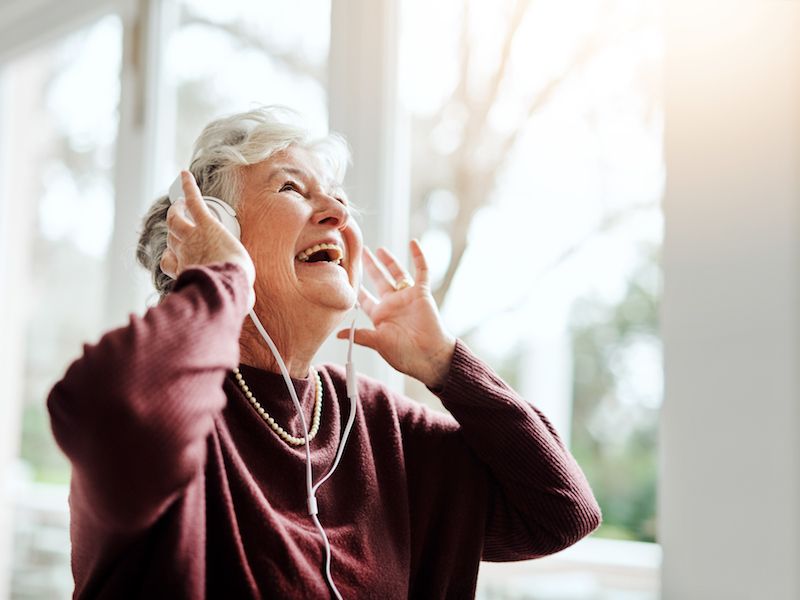
People who work in loud surroundings such as construction sites or at heavy metal concerts are not the only people affected by noise related hearing loss. It doesn’t even need to be work-related, recreation-related noise exposure can be dangerous, also. The most common type? Music, gaming, streaming video or anything else that you would listen to through earbuds or headphones.
You might not believe your smartphone or tablet can get that loud. The average pain threshold for human hearing is around 150 db which is well within the range of these devices. Your ears will literally start to feel pain at this volume. So what’s the plan to safeguard against this type of noise-related hearing loss?
The volume level here is important. A simple shorthand that’s widely suggested is the 60/60 rule: Listen with the volume at or below 60% for 60 minutes or less at a stretch (because the length of sound exposure matters, too).
Your Hearing Aids Can be Set up For Music
Make sure, if you’re wearing hearing aids, you don’t attempt to drown out other sounds by cranking your streaming music up too high. Additionally, consult us about how best to listen to music. If you’re a musician or someone who loves music you may have noticed that most hearing aids are programmed to sharpen the clarity of voices…not necessarily music. While enjoying music, we can probably make a few adjustments to help better the sound quality and decrease the feedback.
Selecting Headphones
If you don’t wear hearing aids, there are lots of options for buying headphones. It might be a matter of personal preference, but there are some things you will want to consider there too.
Over-the-Ear Headphones
Over the ear headphones are becoming popular again but you most likely won’t find the old foam covered ear pieces that used to come with a walkman. They have a lot of options in style and color, are usually endorsed by celebrities, and can be unexpectedly pricey. And these headphones cover the whole ear blocking unwanted sound, unlike those old foam ones.
Main-stream perception is that these are less dangerous than in-ear headphones because the source of the sound is further from your eardrum. But because the speakers are larger they are normally capable of much higher volume. Noise cancellation can be a helpful thing as long as you’re not missing out on needed sounds like an oncoming automobile. But on the upside, you don’t have to compete with outside sound so you can enjoy your music at lower volumes.
Earbuds
The normal earbuds that are included with devices like iPhones are much maligned for their poor quality of sound, but because they come with your phone lots of people still use them. Particularly, with newer Apple devices, it’s just easier to use the earbuds which came with the device because it probably doesn’t have a headphone jack.
Earbuds also don’t block out sound so the downside is, you have a tendency to turn up the volume. It’s generally thought that sticking earbuds so close to your eardrum is the main issue but it’s actually the volume.
Isolating or Occluding Earbuds
More comfortable than ordinary earbuds, models that have a round rubber tip are the choice of many people because they help block outside noise. The rubber molds to the shape of your ear, producing a seal that blocks other sounds from getting in. Not to sound like a broken record, but these types of earbuds have the same downsides as the other two (volume is the main problem), as well as carrying the same caution as over-the-ear headphones (they can block out warning sounds). Needless to say, these won’t work for you if you have hearing aids.
You might have to check out quite a few pairs before you find headphones that meet your requirements. Depending on what you regularly use them for talking on the phone, say, as opposed to listening to music, you’ll have different acoustic expectations. The essential thing is to seek out headphones that make it comfortable for you to enjoy at a safe sound level.
Don’t Cut Corners When it Comes to Your Hearing
How can you be sure it’s okay? If you use a smartphone, you can get an app for that, you can download the National Institute for Occupational Safety and Health’s free Sound Level Meter app. You can get different apps, but studies has found that the dependability of these other apps is spotty (in addition, for whatever reason, Android-based apps have been shown less precise). That prompted NIOSH to create an app of their own. The app enables you to measure external noises, but sounds coming from your device’s speakers can also be measured, so you will find out precisely how much volume your ears are subjected to. It’s a little bit of work, but putting in place these kinds of preventative steps can help safeguard your hearing.
